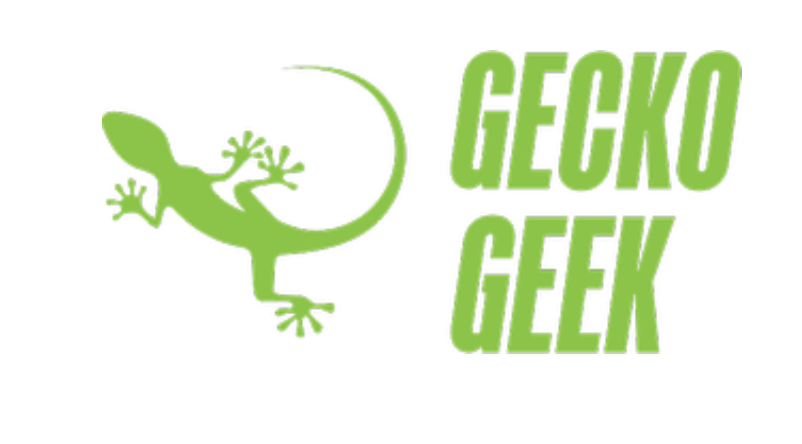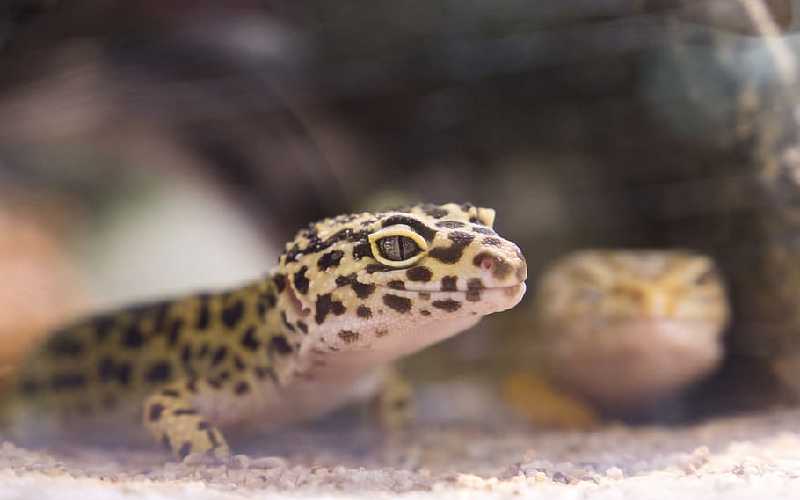What is leopard gecko mouth rot? It’s a serious disease that affects leopard geckos quite badly. If you suspect it, you need to act quickly and immediately seek the advice of your vet.
Symptoms of Leopard Gecko Mouth Rot
The symptoms are:
- Difficulty eating
- Discharge from the mouth
- Bumps under lips and around the mouth
- Off white or greyish patches on skin that appear to change color slightly when viewed at different angles. These patches may be scaly or flakey in appearance. They will also not go away easily with water.
The bumps under the mouth are usually very small and look more like an irritation around the mouth. You may also see a dark grey or black band under the lip on either side of where it attaches to the gecko’s body if that is where it first appeared. Typically, if your gecko has skin cancer you will not be able to see it.
Treatment for mouth rot in leopard geckos
Diet: Make sure your leopard gecko is eating, if not start feeding force feeding as described below until they eat on their own. If you feed a commercial diet that includes insects like Repashy CrestedGecko Diet this will most likely not be a problem because they do not need to be hand fed. But if you feed a different diet and your gecko is eating less than normal start feeding more frequently or force feeding with tweezers once every hour until they eat on their own again.
Powdered Mouth Rot Treatment:
(1) Mix a 50:50 ratio of Calcium Oxide (you can buy it online or use egg shell powder which is great because you don’t have to worry about getting any grit into your reptile’s gut from sand or eggshells that may cause impaction) and D3 with water until they make a thick paste. Feed your gecko this paste by using tweezers to smear it on the roof of their mouth. You can feed them a few times a day until they feel better and start eating on their own again.
(2) You can also use Petromalt which is an over-the-counter antacid commonly used for skin issues with reptiles and birds. You will need to mix it into a paste using a 50:50 ratio of Petromalt powder and D3. This is the treatment I used for my leopard gecko since Calcium Oxide was difficult to find in my area.
Again, you can feed your gecko this paste using tweezers to smear it on the roof of their mouth.
Topical Care for Mouth Rot in Leopard Geckos:
The bumps under the gecko’s lips should go away within 2-3 days without treatment. If they do not clear up, continue treating as described above until they do. Healing will be faster if you also follow the topical care steps below .
(1) Change your gecko’s enclosure as much as possible. Remove any hiding places, water bowls and food dishes. Change 1/3 of the substrate to a clean paper towel or cornstarch based cleaner like Zoo Med’s Safe Clean . Put the gecko back in and place a paper towel or Kleenex over their face so that they are forced to lay on top of it. This will keep them from cleaning themselves with their tongue which could cause more irritation and spread the infection.
(2) Clean your gecko’s mouth area regularly using warm water and a cotton pad or soft tissue. There will be a brown discharge that you may see when cleaning their mouth and around the lips.
(3) Oral Anti-Bacterial Gel: you can also use an oral anti-bacterial gel like Listerine or Chlorohexidiene for easier access to your gecko’s mouth. You will need to use tweezers to put the gel on your gecko’s skin in their mouth, which may be difficult depending on how much they struggle and how big their mouth is.
If you follow these tips your leopard gecko should recover quickly and without any permanent implications.
Housing your Leopard Gecko with a Reptile Fogger or UVB light
If your leopard gecko already has mouth rot, then it is best to keep them separate from any other geckos to avoid spreading the bacteria. In addition, if you are treating for mouth rot you do not want to put your healthy gecko in that same cage since the bacteria can be transmitted from your sick gecko to the healthy one.
In other words, if your leopard gecko has mouth rot then you want to treat them in their own cage while treating any other reptiles in a separate cage using reptile foggers/uvb lights.
A reptile fogger is a great way to help treat mouth rot in leopard geckos (as well as other issues) since it provides both heat and UVA. A reptile fogger is an excellent source of UVB for your leopard gecko because they cannot absorb UVB from the glass through which it would normally emit, like with many reptile bulbs or tubes.
A reptile fogger should be running about 12-15 hours per day in order to provide your leopard gecko with the UVB rays required for heat and vitamin D3 synthesis. You will need to make sure that your lizard is getting enough heat during this time by basking in the light as well.
A heat lamp is a great way to help with this since it will provide your gecko with both UVA and UVB. To ensure that your leopard gecko gets the light they need, be sure to place their hide on the opposite side of the fogger so that they are basking in the light as much as possible.
Your reptile fogger can be used to treat your leopard gecko for mouth rot either before or after you have treated them with a topical paste like Petromalt and D3. If the bumps on their lips are still present at least 2-3 days after treating then you may need to start using the fogger to provide your gecko with more UVA. If the bumps have cleared up then you can use it for heat and UVB.
Using ReptiSun 5.0 tube lights (with a ReptiSun reflector)
If you have more than one leopard gecko or other reptiles to treat at the same time, it may be easier to use a UVB light for your reptile fogger. You will need to either turn the leopard geckos on their side during daylight hours so that they can absorb the UVB rays from the light or you will want to use a reptile fogger that emits both UVA and UVB. ReptiSun 5.0 tube lights work well for this purpose because they provide full-spectrum balance, which is especially useful if your leopard gecko has multiple vitamin deficiencies such as in the case of mouth rot.
To make sure that your leopard gecko is getting the correct amount of UVB each day, use a tape measure to record the distance between where you put their hide and the light source (the end point for their basking area). Then divide this measurement by 4. Do not leave your gecko in direct sunlight since this is not safe. If your leopard gecko cannot be exposed to UVB rays for some reason, then they will need to be given vitamin D3 supplements orally or by injection.
Giving Vitamin D3 Supplements (like Petromalt)
It can sometimes be difficult to know how much vitamin D3 your leopard gecko is getting from their diet. In addition, if you are treating them for mouth rot, then you may want to try giving them vitamin D3 orally or by injection to see if it helps their recovery.
If you kill and prepare your own feeders (as opposed to buying pre-killed ones) you may need to be careful about how much vitamin D3 is in the feeder since the type of food that they eat can affect their D3 levels. Also, if you are concerned about giving them too much vitamin D3 through supplements then you could try treating with Petromalt and sun exposure at the same time.
If you are treating your gecko with a solution like Petromalt, then you will need to use an oral syringe (or eye dropper) to give them their supplements. It is important that the solution reaches as far back in their mouth as possible so that they ingest it through both the front and back of their mouth.
Another method for treating your leopard gecko with vitamin D3 is by using an injection. You will need to use an oral syringe and a 20-gauge 3/4″ needle in order to perform this procedure, which should only be done by someone experienced with this type of treatment.
If you enjoyed this article you might also like to read about Leopard Gecko losing tail Help and Leopard Gecko Diseases and Injuries


2 thoughts on “Leopard Gecko Mouth Rot”